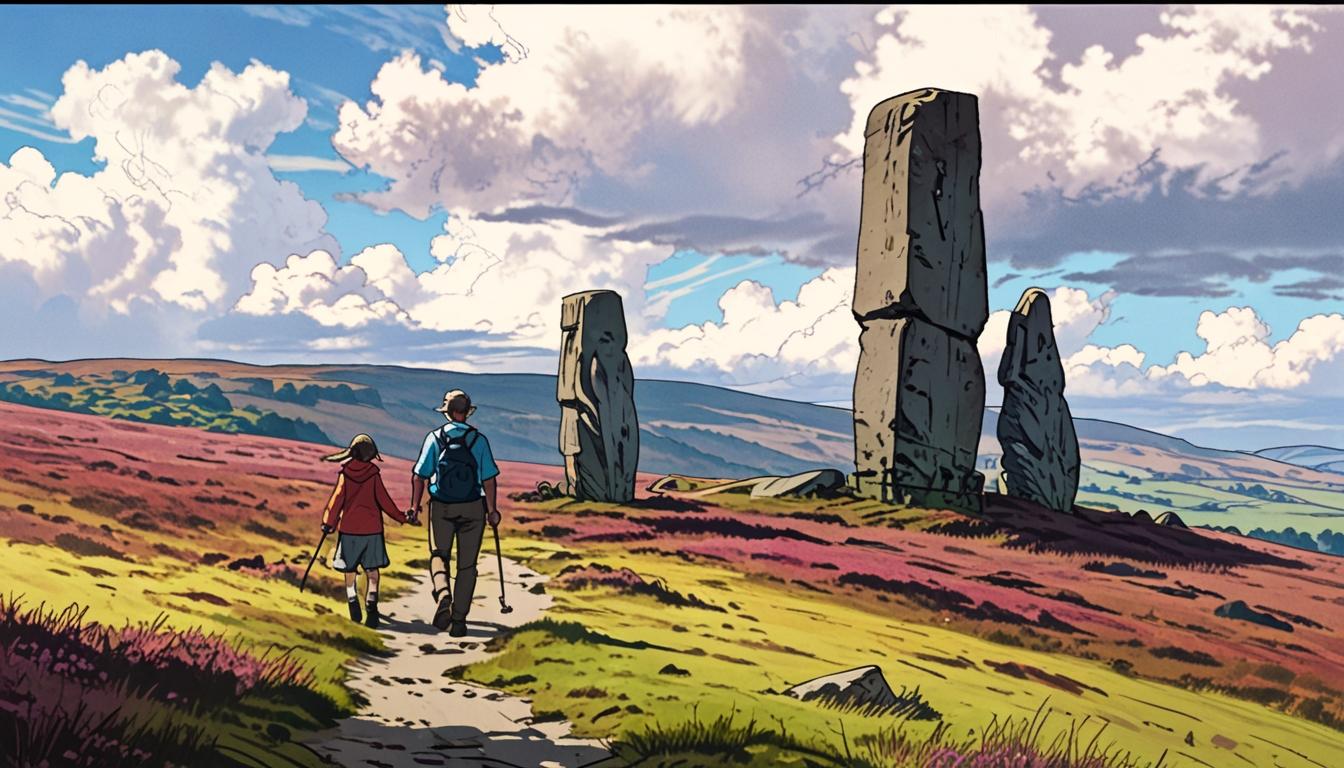One August evening in 1955, the York Mountaineering Club gathered in the Olde Starre Inne, pondering the lack of summits to scale around their city. It was during this gathering that club chair David Laughton brandished a copy of Dalesman magazine, revealing an ambitious challenge conceived by Bill Cowley, the column's writer. Cowley offered an "inexpensive" cup as a prize for anyone who could traverse the North York Moors within 24 hours. The proposed route spanned across a landscape rich in history and hardship, encompassing Carlton Moor, Cringle Moor, Cold Moor, and howling wind-swept ridges leading to the sea at Ravenscar.
With a resounding "Aye," Laughton's fellow mountaineers accepted the challenge. Thus began a series of weekends spent hitchhiking to the moors, finalising their ambitious route. The first successful attempt at the Lyke Wake Walk took place on October 1, 1955, when Laughton, Cowley, and a hardy group of nine others began their trek. The journey lasted for 23 hours and concluded with the group receiving their promised tankards. Cowley, mindful of the ancient burial mounds along the way, named the walk after the "Lyke Wake Dirge," echoing the somber themes surrounding the burial sites along their path.
Reflecting on this rich narrative, many participants over the years have echoed sentiments of camaraderie forged amidst the challenges of the trek. The Lyke Wake Walk has become a rite of passage for over 160,000 walkers since its inception, particularly thriving in the 1960s and 1970s when participation peaked, reaching annual numbers of around 15,000. However, this explosion in popularity had repercussions; the growing foot traffic began to adversely affect the delicate moorland ecology, prompting the New Lyke Wake Club to collaborate with landowners and conservation bodies to protect the landscape. Alternative routes, such as the Hambleton Hobble and Shepherd's Round, were devised to distribute walker traffic more evenly across the popular regions of the moors.
In recent years, the walk has remained a familial tradition for many. One such participant, Paul Walker, shared plans to honour the 70th anniversary of the iconic trek. He was joined by his own children and their families, continuing the legacy of adventure passed down through generations. Notably, Malcolm Walker, one of the original participants, now at 89, walked the final stretch of the route alongside his family. They started their endeavour in the wee hours, braving the early morning darkness and the elements. As they traversed Carlton Bank, the glittering lights of Middlesbrough below served as a comforting backdrop.
Throughout the day, the family navigated through striking landscapes punctuated by standing stones and vibrant expanses of heather, capturing the essence of the moor’s beauty. Opinions varied; while some marveled at the mesmerizing scenery—a riot of pinks, yellows, and lime greens—others expressed fatigue and discomfort. A stop at the venerable Lion Inn moorland pub provided a brief reunion with the modern world, contrasting sharply with the rugged wilderness they had traversed.
As Malcolm reflected on the experience, he expressed a touching sentiment about the true value of the walk being the time spent with family, rather than the exertion itself. The shared journey, embodying both challenge and celebration, showcased how the spirits of past generations continue to resonate through the landscape. As they reached their final destination at the Raven Hall Hotel in Ravenscar, it was clear that for many, the Lyke Wake Walk transcends mere physical accomplishment—it is a cherished tradition that binds families across the sweeping expanses of the North York Moors, reminding all who journey through it of their shared heritage in this rugged terrain.
Reference Map
- Paragraphs 1-2: [1]
- Paragraphs 3-4: [2], [3]
- Paragraph 5: [4], [5]
- Paragraphs 6-7: [6]
- Paragraphs 8-9: [7]
Source: Noah Wire Services
